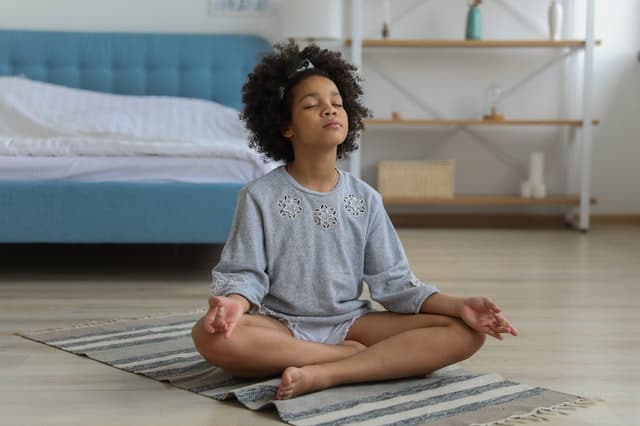
Anxiety Coping Skills for Kids
In a turbulent world where stressors are abundant, (Harvard) providing students with sufficient anxiety coping skills is important. Stress has consistent mental and physical effects on one’s health. The classroom is one place where children can learn skills to cope with stress.
Anxiety Coping Skills for Kids in the Classroom
Creating classroom-appropriate coping skills activities for kids requires an imaginative approach. In principle, everyone needs to practice calming techniques to deal with stress. In practice, children are more likely to remember anxiety coping strategies when they’re incorporated into interactive activities.
Creating coping strategies for students requires a dual-pronged approach. On the one hand, it means creating activities with a foundation on the causes of stress and anxiety. On the other hand, every classroom is different, with different challenges and resources. Therefore, different stressors drive each student’s anxiety and may need to be addressed separately.
Here’s a quick rundown of stress and anxiety coping strategies to help educators teach activities around anxiety coping skills for kids.
Anxiety Coping Strategies

Stress and anxiety shadow the day-to-day lives of millions of Americans. Children are no exception. Stressors that cause anxiety are on the rise, and the prevalence of younger children dealing with them is also increasing. (HarvardGSE)
Recent studies were conducted on the most effective techniques for coping with stress and anxiety. It was found that coping with anxiety should be based on executive function through self-regulation (HarvardCDC).
In the context of teaching coping strategies to kids, this refers to a practice of cultivating the foundational mental capacities for active self-regulation. These are skills fundamental to a child’s development.
Cultivating executive function through self-regulation prepares children for success in life. There are technical bases for practicing executive function. (HarvardCDC) Put into usable terms, these bases are:
- Working memory. This includes the capacity to retain information learned from experiences and lessons. In this context, manipulation refers to an ability to examine the information from different perspectives, to synthesize the information with other information to come to new conclusions, and other mental practices useful for problem-solving.
- Mental flexibility. This refers to the ability to adapt to new circumstances. For children, a lot of their experiences are new experiences. Fortunately for them, children tend to have good mental flexibility. That’s why early childhood is such an opportune time to design activities to encourage children to cope with stress.
- Self-control. In the long run, self-control will be one of the most important fundamental skills children will need to practice to help them cope with anxiety. Self-control involves self-reflection on the part of children, as well as active decision-making regarding their behavior. Educators can create coping skills activities that cultivate opportunities for kids to practice self-control.
These processes for cultivating executive function through self-regulation will build strong foundations for developing coping skills activities.
Coping Skills Activities for Kids

There are many potential coping skills activities for kids that educators can add to their curricula. Educators should bear in mind the foundations of anxiety coping strategies when developing classroom activities, and at the same time adapt any activities to the students in their individual classrooms.
Here are a few suggestions for activities that have proven effective in teaching anxiety coping strategies. Educators can start with this list and then develop their own activities from there (Pathway):
- Schedule daily emotional check-ins. These check-ins create the chance for students to practice self-reflection and self-awareness.
- Have children make something creative that shows them messiness is okay. Painting, coloring, or clay gives children something to focus on and control, helping them practice spatial reasoning, working memory, and active mental flexibility.
- Gratitude journaling/compliment list helps with positive thinking and reflection. This activity helps children cultivate a practice for seeing scenarios from calmer and more down to earth perspectives, helping them with working memory and self control.
- Practice deep breathing. This go-to strategy is important when coping with anxiety. A wide body of research has substantiated the benefits, both mental and physical, of deep breathing. (Routledge) At Soul Shoppe, we use the Stop and Breathe Technique. This is a valuable anxiety coping strategy that any educator can incorporate into their curriculum.
- Encourage children to read books that are age-appropriate with themes of stress and anxiety. Reading is a great way for students to see anxiety coping skills for kids in action through the stories of others. Dissect and discuss these stories to encourage deeper thinking.
At Soul Shoppe, we offer special social and emotional learning techniques for coping with anxiety. Learn more about the Stop and Breathe Technique and how to create a peace corner to help kids cope with anxiety and other big feelings. Soul Shoppe provides social emotional learning programs and encourages self-awareness and self-soothing techniques in children. Click for more information on SEL Programs for Elementary Schools.
You May Also Like:
Teaching Children How to Self Soothe
Conflict Resolution Activities for Kids

